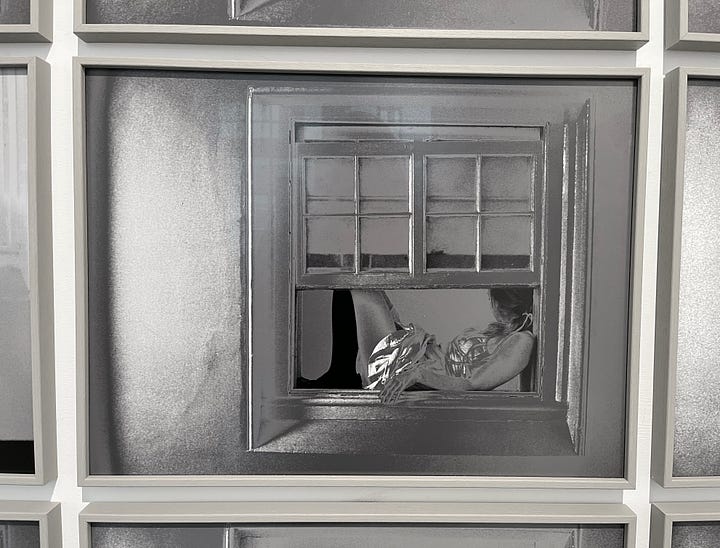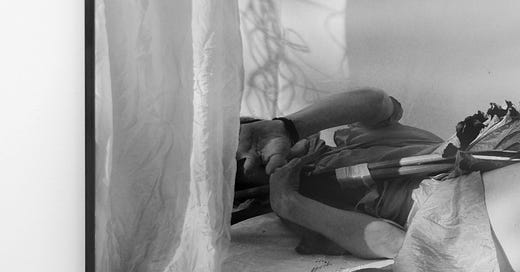Link: Alice Folker Gallery (DK)
Wings of Desire
Text by Augusta Atla, 2025


Painting – and the act of painting – is not merely the gesture of the hands applying pigment. Painting is not solely the frame and the materials that physically constitute the work. Indeed, painting exists even before it takes form physically. Even if painting did not have a concept in itself before the Renaissance, the act of painting and creating images is prehistoric. However, there is one myth in the history of painting that I can never forget.
A Greek myth, written down by Pliny the Elder (23/24 – 79 BCE), recounts that when men went to war or on a long travel in antiquity, women traced the contours of their lovers' shadow upon the wall – an act borne of longing, a means of preserving their beloved’s presence as a memory. These women did not know if they would ever see their husbands or lovers again. Thus, the idea – or the myth – emerged that painting was invented by women as a means of enduring grief, longing, separation, uncertainty, war, and unfulfilled love.
“She was in love with a youth, and when he was leaving the country, she traced the outline of the shadow which his face cast on the wall by lamplight.” - Pliny the Elder, from the Elder Pliny’s Chapters on the History of Art.
This myth constitutes an entire genre in the history of painting, exemplified by some of the most renowned works: The Origin of Painting (1786) by Jean-Baptiste Regnault, Invention of the Art of Drawing (1791) by Joseph Benoît Suvée, and The Origin of Painting (The Maid of Corinth) (1775) by David Allan.
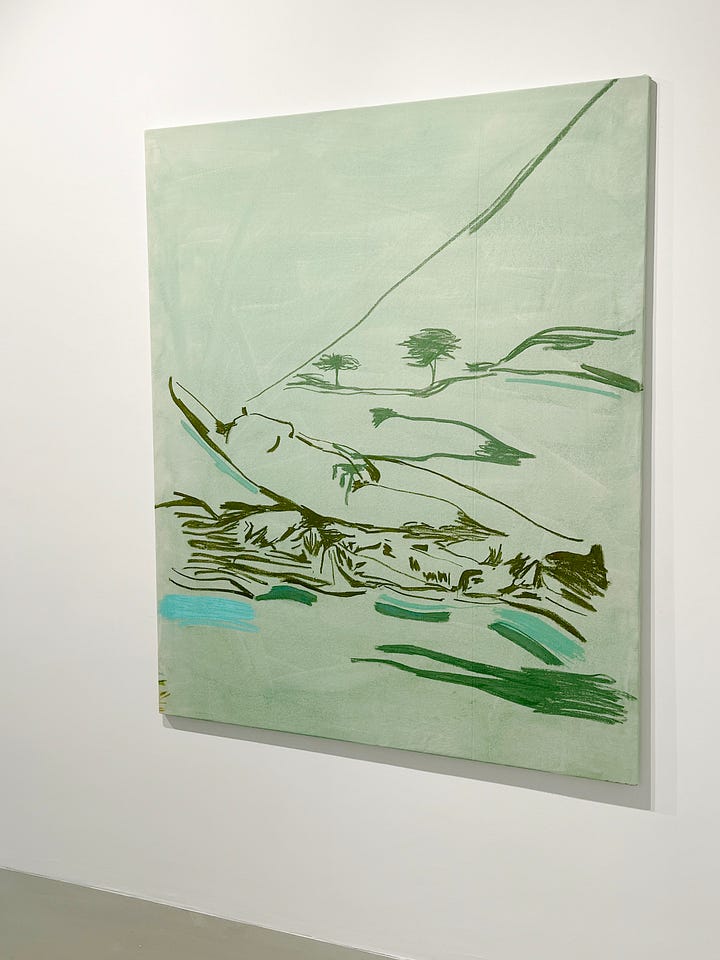
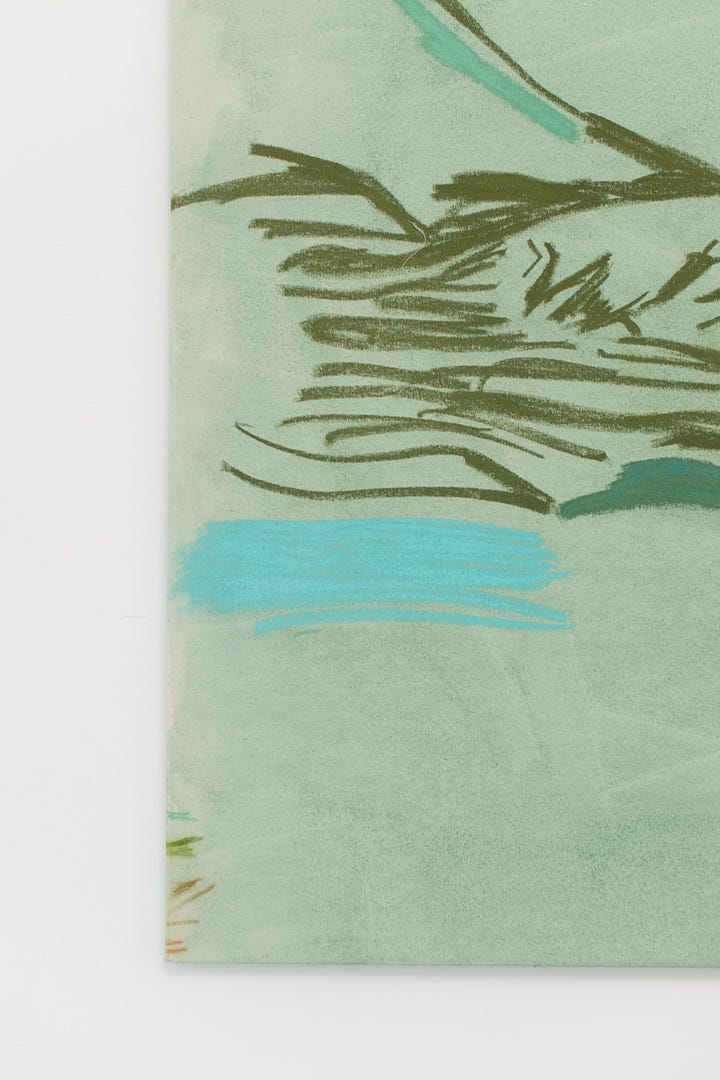
My works – even when they do not employ painting as a medium – emerge from this ‘space of painting’. A space of longing, love, separation and absence. Whether the beloved be my mother, my father, a man, a friend, a conversation, an unborn child, a light over the streets of Athens, or simply a memory I yearn for. My works are created from a constant state of longing, or perhaps be it a paradox: a longing to never long again?
As the Greek myth suggests the eroticism and eros that my works explore are not merely explicit as a subject or theme in certain pieces; rather, they refer, more crucially, to the burning existential longing in which everything – for the painter – is set ablaze.

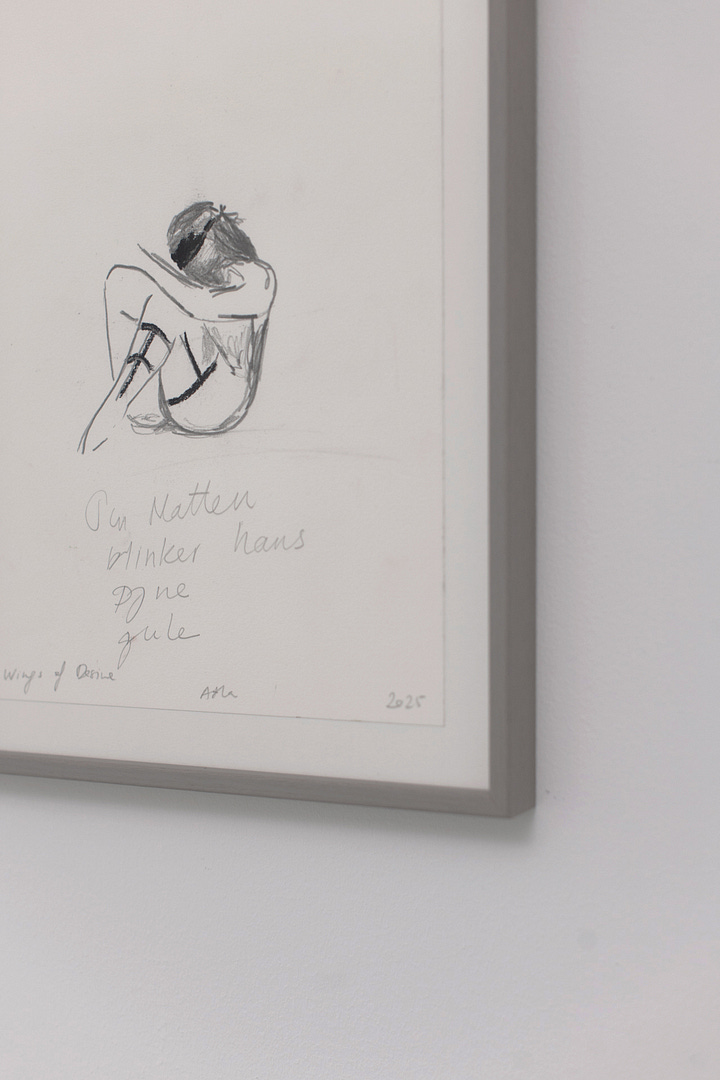
To be an artist is to hold a room of one's own sexuality. Indeed, it is only recently that we have begun to acknowledge that female artists, too, have had male muses, just as male artists have historically had female muses. The recognition of female sexuality in our visual culture and fine art as something psychological, creative and spiritual – rather than merely an object of male desire – is, perhaps surprising for some, also part of the broader development of politics in terms of strengthening artistic freedom, women's free speech and equality.
Furthermore, when artists like me create works that engage with eroticism as both theme and motif, it is in order to examine that which remains vastly underrepresented in art history: the female gaze and visual representations of female sexuality. If I can map not only the subject of desire but, more crucially, the space of desire itself, then I do so. In other words, to paint is to wear the 'wings of desire’.
